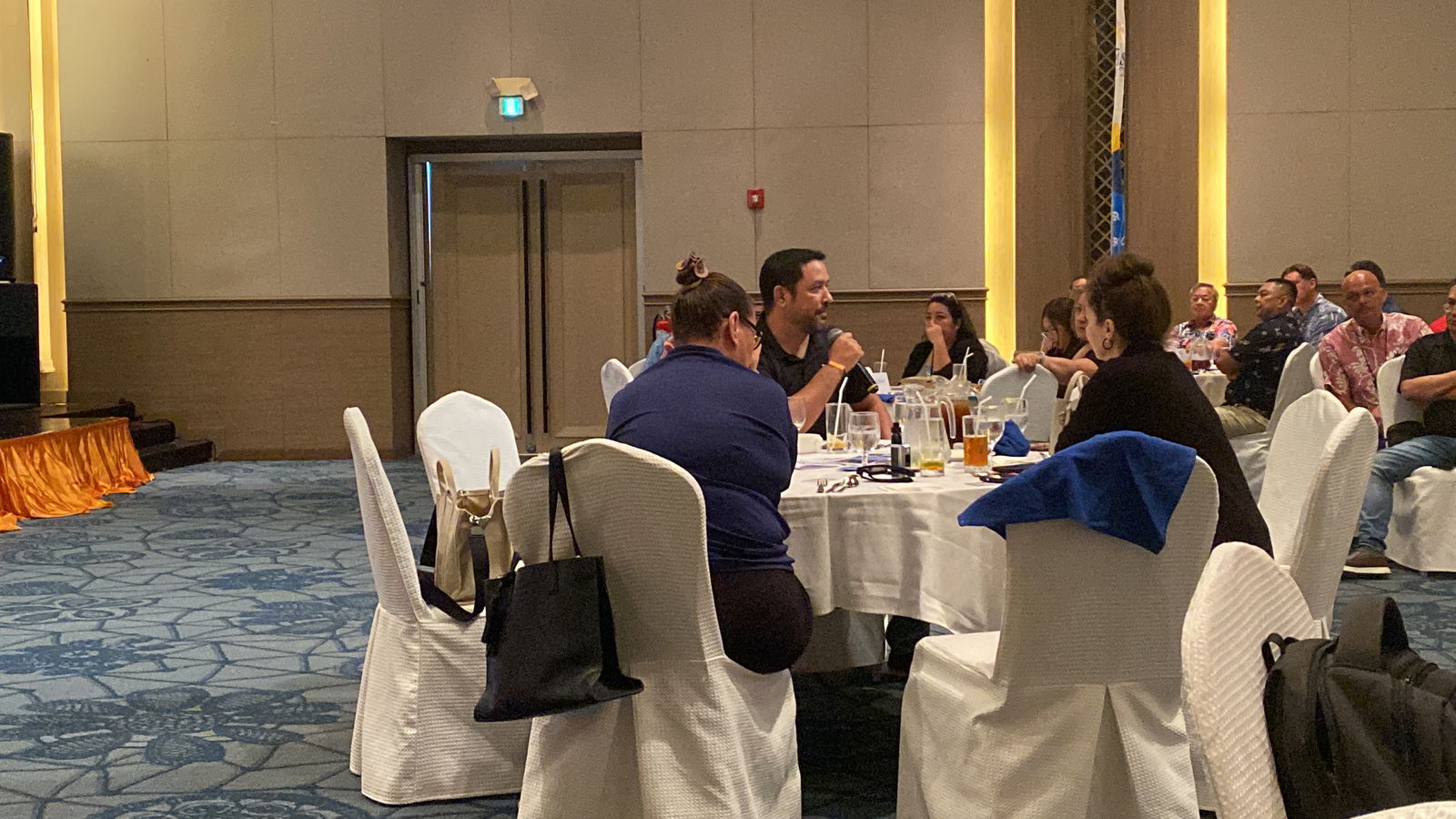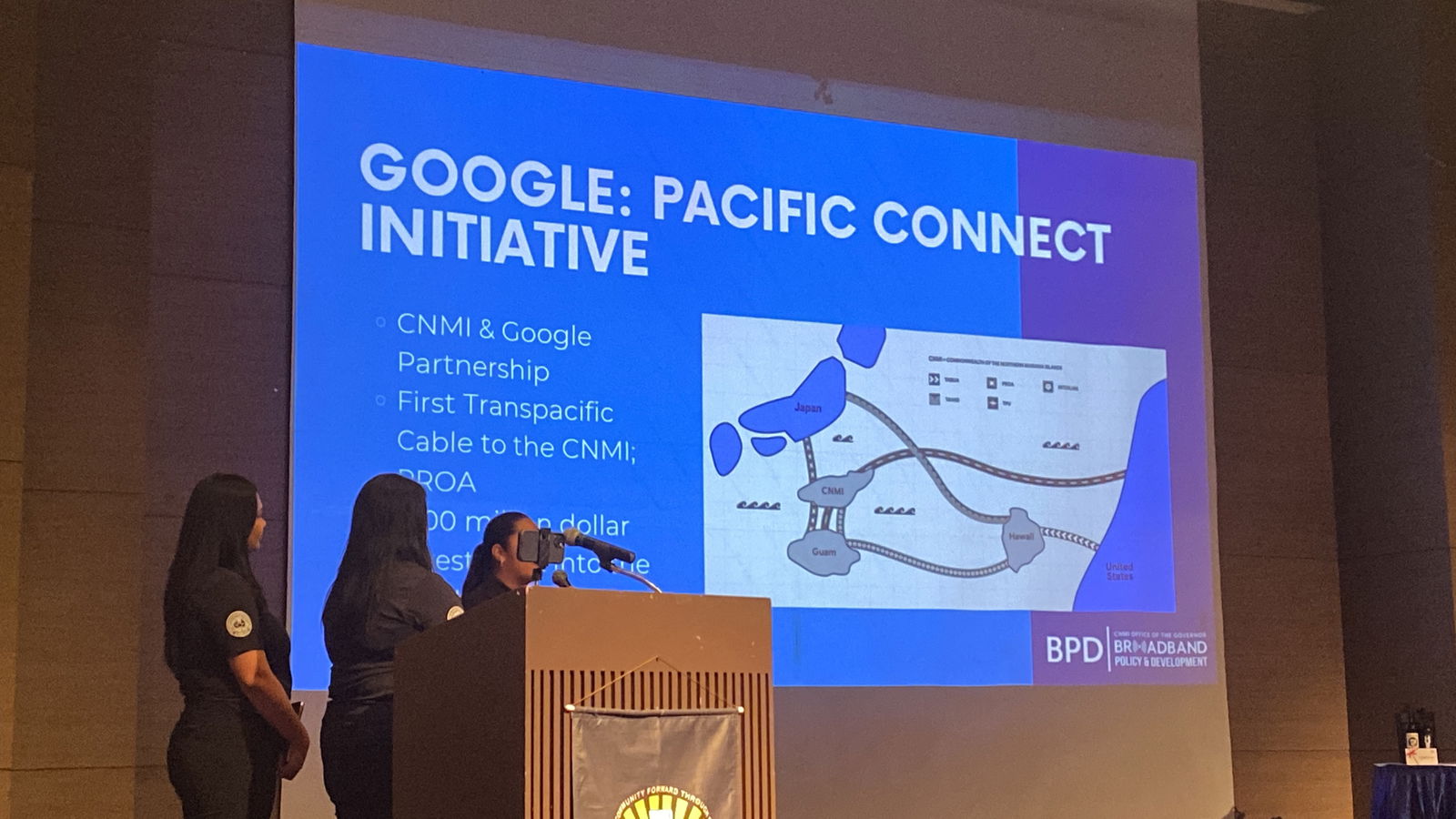
Glen Hunter addresses a question during a Saipan Chamber of Commerce meeting at the Saipan World Resort on Wednesday, Sept. 4.

Broadband Policy and Development staff speak about the upcoming Google Pacific Connect Initiative.
DURING a general membership meeting of the Saipan Chamber of Commerce on Wednesday, Sept. 4 at the Saipan World Resort, the Broadband Policy and Development office announced that Google is laying an undersea fiber optic cable, which will connect to the Marianas.
BPD, which is headed by Glen Hunter, also discussed grant opportunities available as part of the Broadband Equity, Access, and Deployment or BEAD Program and the upcoming Governor’s Broadband Boot Camp project.
The Google subsea fiber optic cable project is officially titled the Pacific Connect Initiative or PCI.
The fiber optic cable will run from Japan to Guam, and the entire project will cost around $4 billion dollars, which will be covered by Google, BPD said.
A “hyper scale internet exchange point” will also be built in the CNMI to allow for “more traffic” and higher internet speeds.
This will “consolidate and aggregate” all of the fiber optic cables in the region, so the CNMI could become a digital hub for the Pacific, Hunter said.
The benefits include improved internet reliability and speed, which will make the CNMI more attractive to “remote tech startups” and “remote professionals.”
Hunter said currently, CNMI data is transmitted to the U.S. West Coast, and then back to the CNMI, which creates a lag.
The PCI will shorten the distance data travels through the Marianas and the Pacific.
With the laying of the Google fiber optic cable and the development of other projects at the BPD office, the CNMI could be “put on the map” as a location for a digital economy, Hunter said.
“What we’re trying to do is lay a solid foundation with the BEAD project for an underground resilient fiber-to-home network so every business and home is connected solidly to the internet. The subsea system connection is the other piece,” he said. “It’s getting the data and all of those big players to locate here as well so that we then have this foundation that can truly develop a robust digital economy, one that could rival other parts of the world.”
He said this is a “unique opportunity” for the CNMI because Google is funding most of the project to lay a subsea fiber optic cable. The federal government, for its part, has awarded the BPD office funding to establish a terrestrial network that supports wider internet use for businesses and underserved populations.
“So we’ve really positioned ourselves in the next few years to jump or leapfrog into the future,” Hunter said.
In a presentation, BPD also spoke about the different programs coming out of its office this year.
In October, the Palacios administration is launching the Governor’s Broadband Bootcamp project, which aims to increase the CNMI’s workforce capacity in technology.
The program will train residents to become the “backbone” of broadband expansion efforts in the CNMI.
Up to 300 trainees will gain on-the-job experience, hands-on training, and classroom instruction in data networking.
BPD is partnering with the Northern Marianas Technical Institute, Northern Marianas College, and the Department of Labor.
The goal is to ensure that the CNMI has a skilled local workforce ready to assist subgrantees in deploying underground fiber in the Commonwealth.
BPD is also drafting an application packet for subgrantees interested in taking on infrastructure projects, said Krissa Deleon Guerrero, BEAD outreach coordinator.
BPD will offer “1-on-1″ application support sessions to help clarify requirements.
The subgrantee process launches in October.










